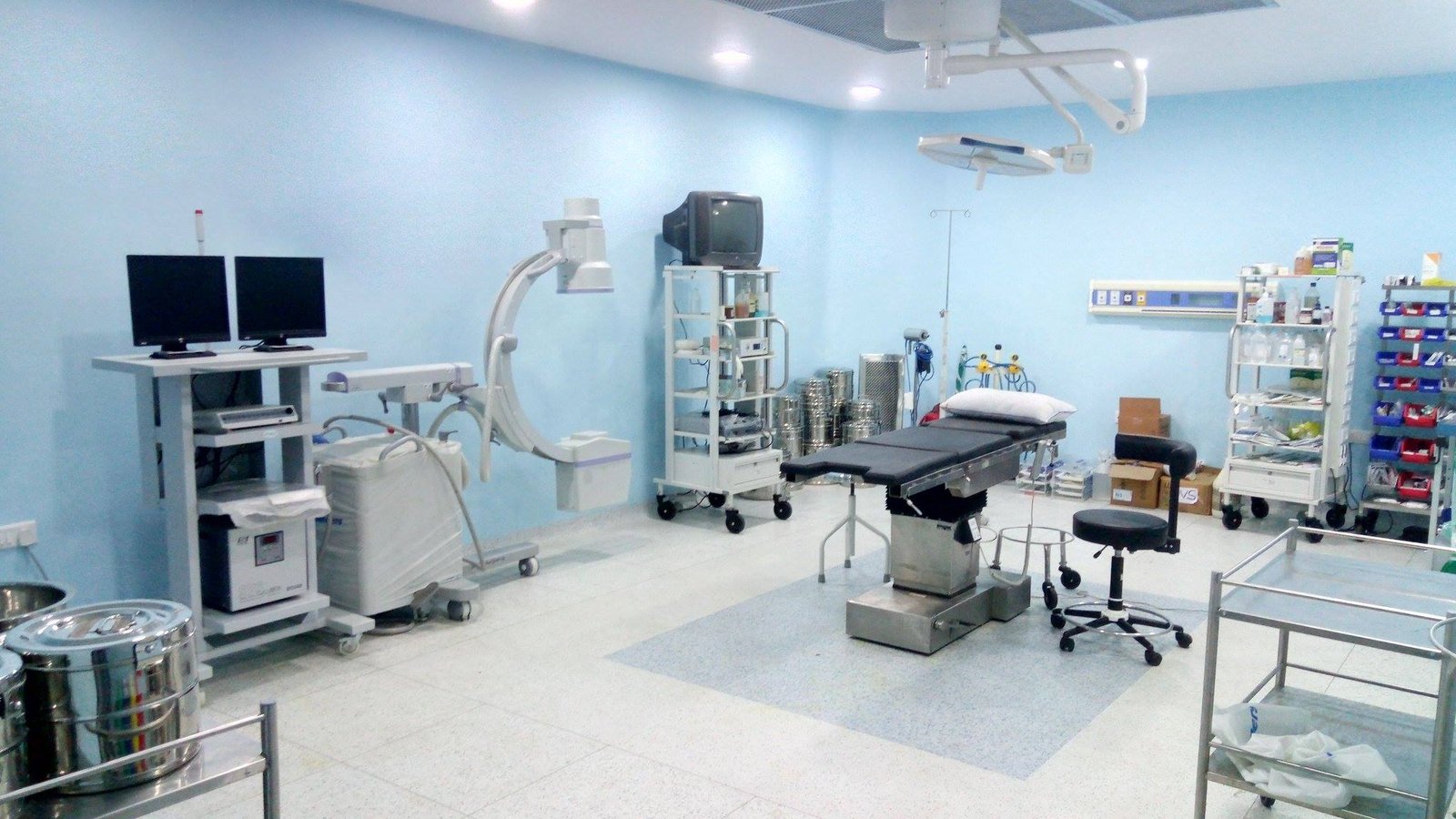
- 074348 42144
- jbhospital17@gmail.com
- Mon - Sun 8:00 AM- 8:30 PM

Major OT
Operating room equipment
- The operating table in the center of the room can be raised, lowered, and tilted in any direction.
- The operating room lights are over the table to provide bright light, without shadows, during surgery.
- The anesthesia machine is at the head of the operating table. This machine has tubes that connect to the patient to assist him or her in breathing during surgery, and built-in monitors that help control the mixture of gases in the breathing circuit.
- The anesthesia cart is next to the anesthesia machine. It contains the medications, equipment, and other supplies that the anesthesiologist may need.
- Sterile instruments to be used during surgery are arranged on a stainless steel table.
- An electronic monitor (which records the heart rate and respiratory rate by adhesive patches that are placed on the patient's chest).
- The pulse oximeter machine attaches to the patient's finger with an elastic band aid. It measures the amount of oxygen contained in the blood.
- Automated blood pressure measuring machine that automatically inflates the blood pressure cuff on patient's arm.
- An electrocautery machine uses high frequency electrical signals to cauterize or seal off blood vessels and may also be used to cut through tissue with a minimal amount of bleeding.
- If surgery requires, a Heart-lung machine, or other specialized equipment, may be brought into the room. Heart lung machine takes the temporary control of the heart and lung during the surgery maintaining the circulation of blood and oxygen content of the body.
- Advances in technology now support Hybrid Operating Rooms, which integrate diagnostic imaging systems such as MRI and Cardiac Catheterization into the operating room to assist surgeons in specialized Neurological and Cardiac procedures.
Surgeon and assistants equipment
People in the operating room wear PPE (personal protective equipment) to help prevent germs from infecting the surgical incision. This PPE includes the following:
- A protective cap covering their hair
- Masks over their lower face, covering their mouths and noses with minimal gaps to prevent inhalation of plume or airborne microbes
- Shades or glasses over their eyes, including specialized colored glasses for use with different lasers. a fiber-optic headlight may be attached for greater visibility
- Vinyl gloves on their hands; latex is used as well, but much less common due to latex sensitivity which affects some health care workers and patients
- Long gowns, with the bottom of the gown no closer than six inches to the ground.
- Protective covers on their shoes
- If x-rays are expected to be used, lead aprons/neck covers are used to prevent overexposure to radiation
- The surgeon may also wear special glasses that help him/her to see more clearly. The circulating nurse and anesthesiologist will not wear a gown in the OR because they are not a part of the sterile team. They must keep a distance of 12-16 inches from any sterile object, person, or field.
About Hospital
J.B MULTISPECIALITY HOSPITAL is a 110 bed Super speciality medical institution. This world class & highly sophisticated medical establishment offers all major medical specialities, subspecialities, investigation & diagnostics facility, rehabilitation & physical therapy care under one roof.
Get in Touch
J.B.Multispeciality Hospital
At & Po: Aniyad, Ta: Shahera
Dist: Panchmahal,Gujarat,India-389210
![]() 7434842144
7434842144
![]() jbgeneralhospital@gmail.com
jbgeneralhospital@gmail.com

